Greater Manchester County is a metropolitan county located in North West England. It encompasses a diverse range of cities, towns, and boroughs, making it a vibrant and culturally rich region. Home to iconic landmarks, a rich industrial heritage, and a thriving economy, Greater Manchester County offers something for everyone.
The county has a fascinating history, with its formation dating back to the 1970s. The industrial revolution played a significant role in shaping the region, leading to immense growth and development. Today, Greater Manchester County is known for its geographical features, including rivers, canals, and rolling hills, as well as its diverse population.
The local government and administration of Greater Manchester County have a well-defined structure, with a mayor playing a crucial role in governing the region. Each city, town, and borough within the county has its own unique characteristics and attractions, with Manchester being the largest and most prominent city.
The economy of Greater Manchester County has undergone a transformation over the years. Historical industries such as textiles and manufacturing have given way to a diverse range of sectors, including finance, technology, and creative industries. This has contributed to the county’s economic growth and prosperity.
As a popular tourist destination, Greater Manchester County boasts numerous landmarks and attractions. From the bustling streets of Manchester City Centre to the iconic Old Trafford Stadium and the state-of-the-art Media City UK, there is no shortage of things to see and do in the region.
Whether you are interested in exploring the rich history, experiencing the vibrant cultural scene, or indulging in world-class shopping and dining, Greater Manchester County has something to offer everyone.
Key takeaway:
- Greater Manchester County maximizes its land utilization: The county has adopted efficient urban planning techniques to optimize land use, especially in densely populated areas like Manchester. This allows for the development of thriving cities and towns.
- Greater Manchester County has a rich industrial history: The county played a pivotal role in the Industrial Revolution, contributing significantly to the development of industries and innovation. This historical legacy continues to shape the county’s identity.
- Greater Manchester County offers diverse geography and demographics: From picturesque natural features to a multicultural society, the county showcases a diverse range of geographical landscapes and a vibrant population, reflecting its rich heritage and contemporary appeal.
What is Greater Manchester County?
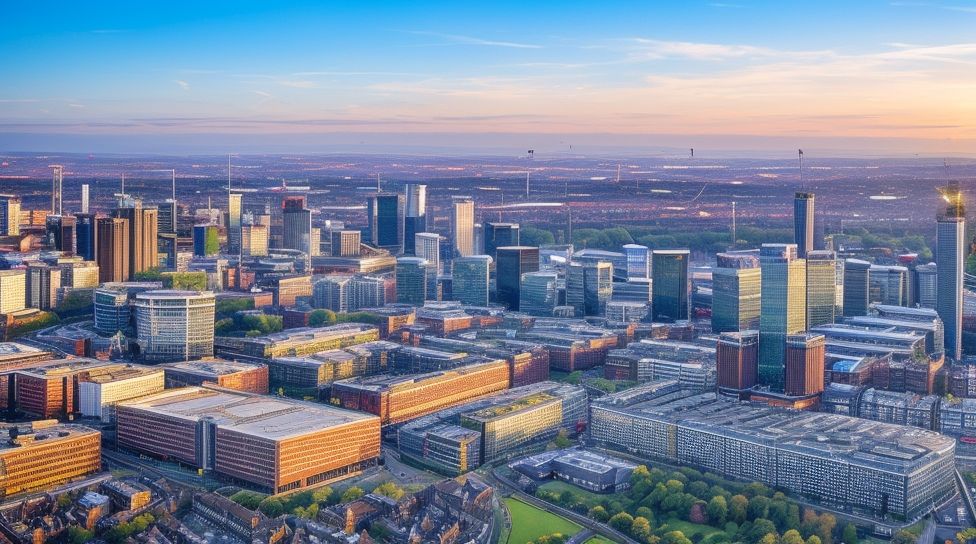
Photo Credits: Runningtrackresurfacing.Uk by Nicholas Green
Greater Manchester County refers to a metropolitan county in North West England. It is a landlocked county that encompasses various urban areas, including cities, towns, and boroughs.
Key aspects of Greater Manchester County:
- Formation: Greater Manchester County was formed in 1974 as a result of the Local Government Act 1972. It was a merger of ten districts, including the cities of Manchester and Salford.
- Geographical Location: Greater Manchester County is located in the North West of England. It is bordered by the counties of Lancashire, West Yorkshire, Derbyshire, and Cheshire.
- Population: Greater Manchester County has a diverse population, with a sizeable urban population concentrated in its various cities and towns. It is one of the most populous metropolitan counties in the United Kingdom.
- Local Government: The county is governed by the Greater Manchester Combined Authority, which consists of several local councils representing different areas within the county. The Mayor of Greater Manchester provides overall leadership and representation.
- Economy: Greater Manchester County is known for its strong economy, with thriving sectors such as finance, manufacturing, creative industries, and healthcare. It is a major hub for business and commerce in the region.
- Transportation: The county has an extensive transportation network, including an integrated public transport system that comprises buses, trams, and trains. Manchester Airport, located within the county, is one of the busiest airports in the UK.
- Culture and Attractions: Greater Manchester County offers a vibrant cultural scene, with numerous museums, art galleries, theaters, and music venues. It is also home to popular sporting clubs, including Manchester United and Manchester City.
- Education: The county has several universities and higher education institutions, attracting students from around the world. These institutions contribute to the county’s reputation for academic excellence and research.
Greater Manchester County is a diverse and dynamic metropolitan county with a rich history, a strong economy, and a vibrant cultural scene.
History of Greater Manchester County
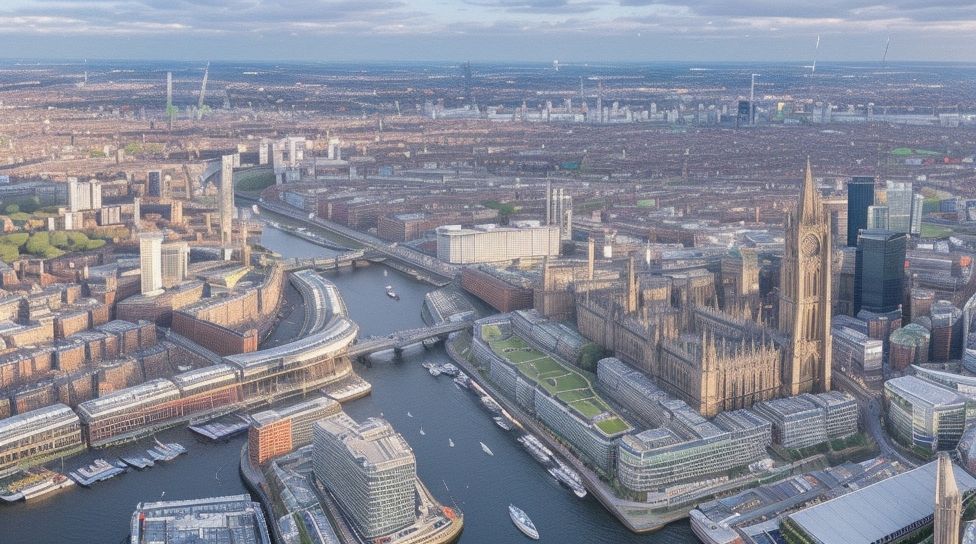
Photo Credits: Runningtrackresurfacing.Uk by Robert Thompson
Experience the captivating journey through the vibrant history of Greater Manchester County. Uncover the origins of this remarkable county, from its formation to the transformative impact of the Industrial Revolution. Explore the intriguing events and historical landmarks that have shaped Greater Manchester County into the thriving hub it is today. Join us as we delve into the rich heritage and uncover the stories that make this region truly distinct. Prepare to be immersed in a compelling narrative that showcases the resilience and progress of Greater Manchester County.
Formation of Greater Manchester County
The formation of Greater Manchester County can be traced back to the Local Government Act of 1972, which reformed the administrative divisions of England and Wales. Here are the key points regarding the formation of Greater Manchester County:
- The Local Government Act of 1972 merged several smaller administrative areas to create Greater Manchester County.
- Historically, Greater Manchester County was made up of ten metropolitan boroughs: Manchester, Bolton, Stockport, Oldham, Rochdale, Salford, Tameside, Trafford, Wigan, and Bury.
- These boroughs were previously part of different counties, such as Lancashire and Cheshire.
- The aim of the merger was to streamline local governance and improve the coordination of services and resources in the region.
- As a metropolitan county, Greater Manchester has its own elected council, which represents the interests of the entire county.
- This new administrative structure allowed for more integrated planning and development, particularly concerning transportation, infrastructure, and economic growth in the region.
The formation of Greater Manchester County was a significant step in creating a unified and cohesive region with a strong local government system that could address the specific needs and challenges of the area.
Industrial Revolution and the Impact on Greater Manchester County
During the Industrial Revolution, Greater Manchester County underwent significant growth and development, which transformed it into an industrial powerhouse. The impact of the industrial revolution on Greater Manchester County was profound. The county became a major hub for textile manufacturing, with numerous cotton mills and factories emerging. This led to the rapid growth of towns and cities such as Manchester, Bolton, and Oldham. The population of Greater Manchester County surged during this period, leading to the expansion of cities and towns to accommodate the influx of workers. New communities also sprang up around factories and industrial areas. The industrial revolution brought economic prosperity to the county, with the textile industry and other manufacturing sectors booming, creating employment opportunities and driving economic growth. The landscape of Greater Manchester County changed dramatically as rural areas transformed into bustling cities. This urbanization brought about the construction of new infrastructure, such as railway lines and canals, to support the transportation of goods and materials. The industrial revolution had a profound impact on society in Greater Manchester County. While it brought increased wealth and job opportunities for some, it also led to poor working conditions and overcrowded living conditions for many workers. The emergence of trade unions and the fight for workers’ rights became significant during this time. Overall, the industrial revolution had a lasting impact on Greater Manchester County, shaping its economy, population, and urban landscape.
Geography and Demographics of Greater Manchester County
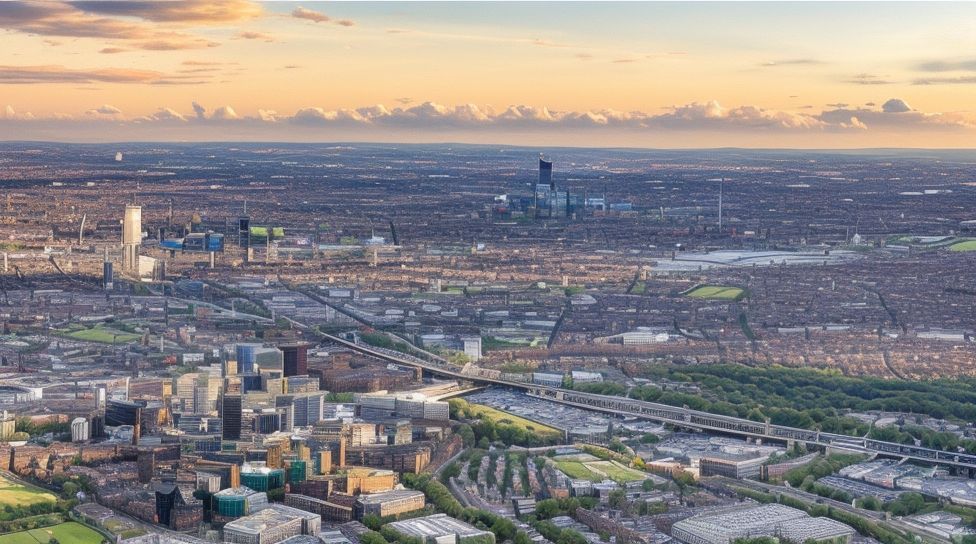
Photo Credits: Runningtrackresurfacing.Uk by Harold Walker
Let’s take a closer look at the geography and demographics of Greater Manchester County. Explore the unique geographical features that shape the land and delve into the vibrant population that contributes to the county’s diversity. From rolling hills to bustling cities, join us as we explore the fascinating blend of landscapes and people that make up Greater Manchester County.
Geographical Features of Greater Manchester County
The diverse geographical features of Greater Manchester County offer a range of landscapes for residents and visitors to explore. Here are some of the key features:
- River Irwell: This river flows through the county, providing a scenic waterway that is used for boating and leisure activities.
- Pennine Mountains: Greater Manchester County is situated on the edge of the Pennine Mountain range, offering beautiful hiking and outdoor recreational opportunities.
- Mosses and Wetlands: The county is home to several mosses and wetland areas, such as Chat Moss and Wigan Flashes, which are important habitats for wildlife.
- Manchester Ship Canal: This 36-mile long canal runs through the county, providing a link between Manchester and the Irish Sea, and also serving as a popular spot for watersports.
- Cheshire Plain: The southern part of Greater Manchester County is located on the Cheshire Plain, characterized by its flat, fertile land which is used for agriculture.
- Hills and Valleys: The county is dotted with hills and valleys, such as Holcombe Hill and the Irwell Valley, which offer picturesque views and opportunities for outdoor activities.
- Parks and Green Spaces: Greater Manchester County is known for its numerous parks and green spaces, including Heaton Park and Tandle Hill Park, where residents can enjoy leisure activities and connect with nature.
These geographical features enhance the natural beauty and recreational opportunities within Greater Manchester County, making it an appealing destination for nature lovers and outdoor enthusiasts.
Population and Diversity in Greater Manchester County
The population and diversity of Greater Manchester County contribute to its vibrant and multicultural character. As of 2023, the county has a population of approximately 2.8 million people, making it the second-most populous urban county in England. The diverse population reflects the cosmopolitan nature of the area, with people from various ethnic backgrounds and cultures residing in the county.
Greater Manchester County is home to a diverse range of communities, including British, Irish, South Asian, African, and Caribbean communities, among others. This diversity is celebrated through various cultural events, festivals, and community initiatives that showcase the richness of different traditions and customs.
The county’s diversity is also reflected in its educational institutions, where students from different backgrounds come together to learn and collaborate. This cultural exchange enhances social cohesion and promotes understanding among individuals from different walks of life.
The population and diversity of Greater Manchester County have a positive impact on its economy and social fabric. The county’s multicultural environment attracts businesses, entrepreneurs, and investors from around the world, leading to a thriving economy and increased opportunities for employment and growth.
The population and diversity of Greater Manchester County contribute to its vibrant and inclusive community. The county’s multiculturalism fosters social cohesion, promotes economic development, and enriches the lives of its residents.
Fun fact: Greater Manchester County is known for its vibrant music scene and has produced several internationally renowned bands and musicians, including The Smiths, Oasis, and The Stone Roses.
Local Government and Administration
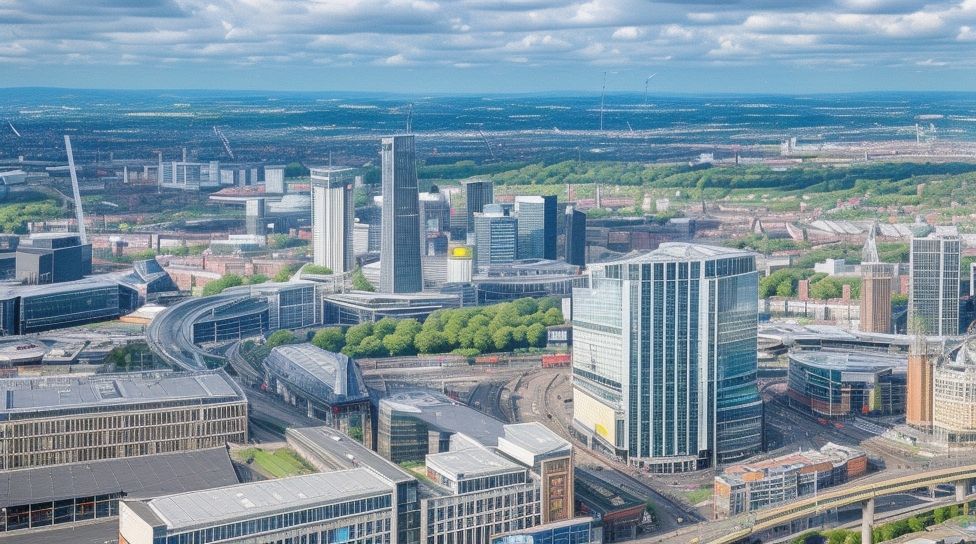
Photo Credits: Runningtrackresurfacing.Uk by Jack Lee
Greater Manchester County has a well-organised local government and administration system, which ensures efficient public services and smooth governance. This section explores the structure of local government in Greater Manchester County and highlights the pivotal role of the Mayor of Greater Manchester. It uncovers how these key components shape the county’s decision-making processes and contribute to its development and prosperity.
Structure of Local Government in Greater Manchester County
The local government structure in Greater Manchester County is organised into ten local authorities, each with its own responsibilities and powers. These authorities work together to ensure efficient governance and provision of public services within the county.
| Local Authority | Responsibilities |
| Manchester City Council | Overall governance of the city, including housing, education, and transportation. |
| Bolton Metropolitan Borough Council | Managing local services such as waste collection, libraries, and leisure facilities. |
| Stockport Metropolitan Borough Council | Providing social care services, managing housing, and maintaining parks and green spaces. |
| Oldham Metropolitan Borough Council | Responsibilities include economic development, planning, and community safety. |
| Rochdale Borough Council | Managing local schools, social welfare, and cultural services. |
| Salford City Council | Overall governance of the city, including housing, transportation, and economic development. |
| Tameside Metropolitan Borough Council | Providing social care services, managing housing, and maintaining parks and recreational areas. |
| Trafford Metropolitan Borough Council | Responsibilities include leisure services, waste management, and environmental protection. |
| Wigan Metropolitan Borough Council | Managing local services such as education, transportation, and social care. |
| Bury Metropolitan Borough Council | Responsibilities include planning, housing, and cultural services. |
The local government structure in Greater Manchester County allows for decision-making at a local level, ensuring that the needs and interests of each area within the county are adequately addressed. The collaboration between the local authorities enhances efficiency and the delivery of public services.
Fact: Greater Manchester County became a metropolitan county in 1974, and its local government structure has evolved over the years to meet the changing needs of its residents.
Mayor of Greater Manchester and Their Role
The Mayor of Greater Manchester plays a crucial role in the governance and representation of the county. They are responsible for overseeing and leading the Greater Manchester Combined Authority (GMCA) and working collaboratively with the ten local councils in the county. The Mayor is elected by the residents of Greater Manchester and serves a four-year term in office.
The role of the Mayor involves making important decisions on strategic issues such as transportation, housing, planning, and economic development. They work closely with local government officials and stakeholders to ensure that the needs and priorities of the county are addressed. The Mayor also represents Greater Manchester at a national and international level, promoting the interests of the county and seeking opportunities for collaboration and investment.
The Mayor of Greater Manchester has powers over certain areas such as policing and fire services, which allows them to influence policies and initiatives that enhance public safety and security. They are also responsible for engaging with the local community, listening to their concerns, and advocating for their interests.
The Mayor of Greater Manchester plays a vital role in shaping the county’s future, making important decisions, and representing the interests of the residents. Their leadership and collaboration with local councils ensure effective governance and the pursuit of common goals for the betterment of Greater Manchester.
Cities and Towns in Greater Manchester County
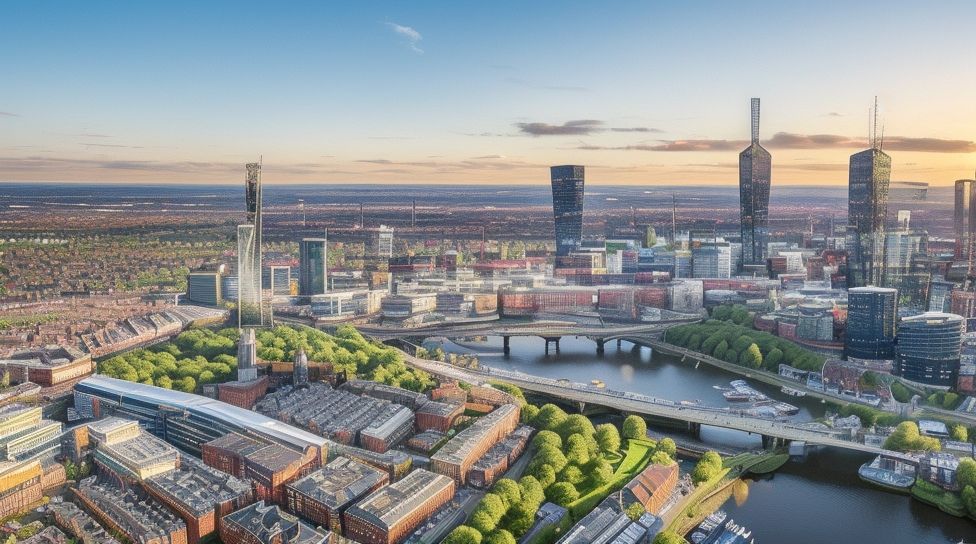
Photo Credits: Runningtrackresurfacing.Uk by Arthur Robinson
Discover the diverse range of cities and towns in Greater Manchester County. From the vibrant metropolis of Manchester to the charming historic town of Oldham and the cultural hub of Salford, each destination has its own unique character and appeal. Explore the fascinating history, thriving arts scene, and impressive architecture that define these remarkable urban centres. Immerse yourself in the rich tapestry of Greater Manchester County and discover a world of diverse experiences waiting to be explored.
Manchester
Manchester is a vibrant city in Greater Manchester County, renowned for its rich history, cultural diversity, and thriving economy.
- Historical Significance: Manchester played a pivotal role in the Industrial Revolution, transforming from a small market town to a major industrial centre. The textile industry thrived in Manchester, earning it the nickname “Cottonopolis.”
- Cultural Hub: Today, Manchester is a cultural hub, with numerous museums, art galleries, theatres, and music venues. It is renowned for its thriving music scene and famous bands like Oasis and The Smiths.
- Sports Excellence: The city is also famous for its passionate football culture. Manchester United and Manchester City are two of the most successful football teams in the UK, with fierce rivalries and dedicated fans.
- Education and Research: Manchester is home to prestigious universities, including the University of Manchester and Manchester Metropolitan University. These institutions have contributed to groundbreaking research and innovation in various fields.
- Architectural Marvels: The city boasts impressive architectural landmarks such as Manchester Town Hall, the Beetham Tower, and the iconic Manchester Cathedral, adding to its visual appeal.
- Effervescent Social Scene: Manchester offers a vibrant nightlife with a wide range of bars, clubs, and restaurants catering to diverse tastes and preferences.
- Sporting Venues: In addition to football stadiums like Old Trafford and the Etihad Stadium, Manchester is also home to the Manchester Arena, one of the largest indoor concert venues in Europe.
- Transportation Hub: With excellent connectivity through Manchester Airport and efficient public transport systems, the city serves as a transportation hub for both domestic and international travel.
- Economic Influence: Manchester has a diverse and thriving economy, with industries spanning finance, media, technology, and the creative sector. It attracts a talented workforce, making it a vibrant business destination.
Manchester’s rich history, cultural offerings, architectural landmarks, and economic opportunities make it a city full of character and appeal.
Bolton
is a town located in Greater Manchester County, UK. It has a rich history and is known for its industrial heritage and vibrant community. The town played a crucial role during the Industrial Revolution, particularly in the textile industry. Bolton has a population of approximately 190,000 people, making it one of the larger towns in Greater Manchester County. The town is known for its diverse population, with people from various backgrounds and cultures residing there.
The local government in Bolton is structured to ensure effective administration and representation of the town’s residents. The Mayor of Bolton holds a significant role in the town’s governance, working towards the betterment and development of the community.
When visiting Bolton, there are several attractions worth exploring. The stunning architecture of Bolton Town Hall is a must-see, and the impressive Bolton Museum and Art Gallery showcase the town’s rich history and culture. For nature enthusiasts, the nearby Smithills Country Park offers beautiful landscapes and walking trails.
In terms of the economy, Bolton has a mix of industries, including manufacturing, retail, and healthcare. It has undergone significant redevelopment in recent years, with efforts to boost the local economy and provide employment opportunities for its residents.
For those visiting Greater Manchester County, Bolton is a town that should not be missed. It offers a blend of history, culture, and natural beauty, making it a destination worth exploring. Whether you’re interested in exploring its industrial past or enjoying its charming landscapes, Bolton has something for everyone.
Stockport
Stockport is a town located in Greater Manchester County, UK. It is situated southeast of Manchester city centre and has a rich history and vibrant community.
With a population of approximately 290,000 people, Stockport is one of the largest towns in Greater Manchester County. It is renowned for its industrial heritage, particularly in textile manufacturing during the Industrial Revolution.
In terms of its geographical features, Stockport is surrounded by beautiful countryside and is located near the Peak District National Park. The town itself is situated alongside the River Mersey and has several canals running through it.
Stockport is home to many notable landmarks, including the historic Stockport Viaduct, which is considered one of the largest brick structures in Europe. The town also boasts a wide range of cultural attractions, such as the award-winning Hat Works Museum, which showcases Stockport’s history in hat making.
In recent years, Stockport has undergone significant regeneration, with new developments like Stockport Exchange and Redrock providing modern amenities and leisure facilities for residents and visitors.
One inspiring story that illustrates Stockport’s community spirit is the tale of the Stockport Spider-Men. During the COVID-19 pandemic, a group of individuals dressed as Spider-Man entertained children in the town by delivering gifts and messages of hope. Their acts of kindness brought joy to many families and highlighted the resilience and compassion of the Stockport community.
Stockport continues to thrive as a vibrant town with a unique blend of history and modernity. Whether it’s exploring its rich heritage, enjoying the natural beauty of the surrounding areas, or experiencing the warmth and kindness of its residents, Stockport offers something for everyone.
Oldham
is a town located in Greater Manchester County. It has a rich history and a thriving community. The town played a significant role during the Industrial Revolution, known for its textile industry. Oldham is home to a diverse population, with people from different backgrounds living and working together.
The local government in Oldham is responsible for the administration and provision of public services. This includes maintaining the infrastructure, ensuring the safety of residents, and promoting the well-being of the town. The Mayor of Oldham plays a crucial role in representing and advocating for the interests of the town and its residents.
Oldham is one of the notable towns in Greater Manchester County. It offers a range of amenities and attractions for both residents and visitors. The town has beautiful parks, museums, and cultural landmarks that showcase its history and heritage.
In terms of the economy, Oldham has evolved from its industrial roots. It now has a diverse economy with a focus on sectors such as healthcare, manufacturing, and retail. The town has seen significant redevelopment in recent years, attracting investment and creating job opportunities for its residents.
Oldham is a vibrant and dynamic town that continues to grow and evolve. Its rich history, diverse population, and economic opportunities make it a great place to live, work, and visit in Greater Manchester County.
Rochdale
is a town located in Greater Manchester County, UK. It has a rich history and is known for its industrial heritage. The town played a significant role during the Industrial Revolution, with industries such as cotton spinning and textile manufacturing flourishing in the area.
Rochdale is situated in the foothills of the South Pennines and is surrounded by beautiful natural landscapes. It is home to the historic Rochdale Canal, which was once an important transportation route during the industrial era.
In terms of demographics, Rochdale has a diverse population, with a mix of different ethnicities and cultures. It is a vibrant and multicultural town, offering a range of amenities and services to its residents.
When visiting Rochdale, tourists can explore attractions such as the impressive Rochdale Town Hall, which is a stunning example of Gothic Revival architecture. The town also has several parks and green spaces, providing opportunities for outdoor activities and recreation.
Pro-tip: Don’t miss the opportunity to visit the famous Rochdale Pioneers Museum, which tells the story of the Rochdale Society of Equitable Pioneers, regarded as the birthplace of the modern co-operative movement. It offers insights into the town’s rich social and economic history.
Remember, while exploring Rochdale, embrace its cultural diversity and take the time to appreciate its historical landmarks and natural beauty.
Salford
Salford, situated in Greater Manchester County, is a lively city renowned for its rich history and cultural heritage. With a population of over 250,000, Salford offers a diverse and cosmopolitan atmosphere.
One of Salford’s highlights is its thriving arts scene. The city is home to prestigious institutions such as The Lowry, a world-class arts and entertainment venue that hosts a variety of performances and exhibitions. Salford Quays, a waterfront district developed from former docklands, is a bustling area featuring the iconic Media City UK, where major broadcasting companies and production studios are located.
Salford is proud to have several historical landmarks, including Ordsall Hall, a beautifully preserved Tudor mansion, and the Salford Cathedral, an impressive Gothic-style cathedral that showcases stunning architecture. The city is also renowned for its impressive sporting venues, including the AJ Bell Stadium and the iconic Old Trafford Stadium, which is the home of both Manchester United Football Club and Lancashire County Cricket Club.
If you are visiting Salford, make sure to explore the vibrant neighbourhoods such as Monton, Eccles, and Worsley, which offer a range of shops, restaurants, and parks to enjoy. Don’t miss the opportunity to visit the Salford Museum and Art Gallery, which houses an impressive collection of artwork and artefacts representing the city’s history.
Pro-tip: When you visit Salford, be sure to take a walk along the picturesque Salford Quays waterfront and enjoy the stunning views of the waterfront skyline.
Tameside
Tameside is a borough in Greater Manchester County, located in the northwest of England. It is renowned for its rich history, vibrant communities, and diverse attractions. If you are interested in exploring Tameside, here are some key highlights to consider:
- Industrial heritage: Tameside played a significant role during the Industrial Revolution. It was home to numerous cotton mills and textile factories, which contributed to the region’s growth and prosperity.
- Natural beauty: Tameside is blessed with beautiful green spaces and stunning countryside. A visit to areas like Werneth Low Country Park and the Peak Forest Canal allows you to enjoy scenic walks, picnics, and outdoor activities.
- Cultural landmarks: The borough is home to numerous historic landmarks and cultural sites. Tameside Museum and Art Gallery showcases the area’s heritage, and Ashton-under-Lyne Town Hall, a Grade I listed building, is worth a visit for its architectural beauty.
- Entertainment and leisure: Tameside offers a range of leisure facilities, including golf courses, swimming pools, and sports centres. For a fun day out, you can visit attractions like the Portland Basin Museum and Cineworld Cinema.
Whether you’re interested in history, nature, culture, or leisure activities, Tameside has something to offer. Plan your visit to this vibrant borough and explore all that it has to offer.
Trafford
Trafford is a borough located in Greater Manchester County, UK. It is renowned for its rich history, diverse population, and vibrant economy. Trafford has a population of approximately 236,370 people, making it one of the most populous boroughs in Greater Manchester County. The borough is home to several towns, including Altrincham, Sale, Stretford, and Urmston. Each town possesses its own unique charm and offers a range of amenities and attractions. Trafford is well-known for its thriving economy, with a strong presence in industries such as retail, manufacturing, and service sectors. It is also home to the Trafford Park industrial estate, one of the largest industrial parks in Europe. The borough is adorned with several iconic landmarks and tourist attractions. These include the Old Trafford Stadium, the home of Manchester United Football Club, which attracts football fans from around the world. Trafford is renowned for its beautiful green spaces, such as Dunham Massey and Sale Water Park, which provide opportunities for outdoor recreation and relaxation. The local government in Trafford is responsible for providing essential services to residents, including education, transportation, and leisure facilities. The borough is governed by a council elected by the residents, ensuring that their voices are heard and their needs are met. Trafford is a vibrant and dynamic borough within Greater Manchester County, offering a high quality of life, economic opportunities, and a range of attractions for residents and visitors alike.
Wigan
Wigan is a town situated in Greater Manchester County. It has a rich history and a diverse population.
The town of Wigan plays a crucial role in the economy of Greater Manchester County. It is renowned for its historical industries, including coal mining and textile manufacturing. These industries have shaped the town’s identity and contributed to its growth.
In recent years, Wigan has witnessed a transformation in its economic landscape. Present-day industries and sectors, such as healthcare, retail, and education, have emerged, creating new opportunities for the residents of Wigan. These industries have diversified the town’s economy and enhanced its prosperity.
Wigan is also home to several landmarks and attractions that attract tourists from both near and far. The Wigan Pier, a historic site that was once a coal-loading jetty, is a popular destination for visitors interested in the town’s industrial heritage. Haigh Woodland Park and Mesnes Park provide beautiful green spaces for recreational activities and relaxation.
With its vibrant history, diverse economy, and notable landmarks, Wigan is an integral part of Greater Manchester County. Its contribution to the region’s cultural and economic development cannot be overstated. Whether you are interested in history, nature, or commerce, Wigan has something to offer.
Economy and Industries in Greater Manchester County
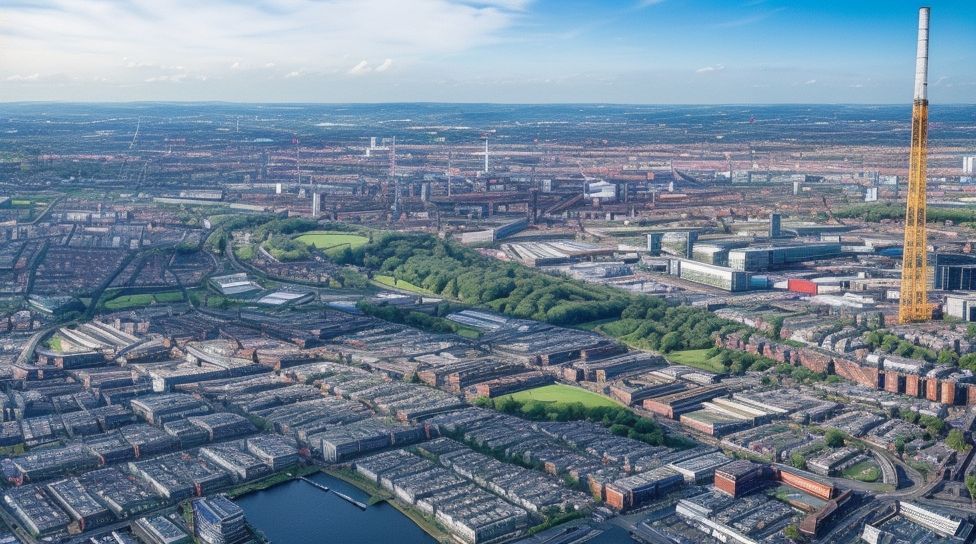
Photo Credits: Runningtrackresurfacing.Uk by Christian Roberts
Greater Manchester County boasts a dynamic and thriving economy, which is driven by a rich history of industries and a variety of present-day sectors. Let’s delve into the past to uncover the fascinating historical industries that have shaped the county. Today, we will take a closer look at the diverse present-day industries and sectors that are driving the economic growth of Greater Manchester. Prepare to explore the economic heartbeat of this vibrant county!
Historical Industries of Greater Manchester County
The Historical Industries of Greater Manchester County have played a significant role in shaping the region’s economy and history. During the Industrial Revolution, Greater Manchester County became a hub for various industries, including textile manufacturing, coal mining, engineering, and transportation.
Textile manufacturing was one of the key industries in Greater Manchester County. Cities like Manchester and Bolton were renowned for their cotton mills, which played a crucial role in the production of textiles. The region’s access to waterways and coal resources boosted the growth of textile manufacturing.
Coal mining was another important industry in Greater Manchester County. The county had abundant coal reserves, which fuelled the Industrial Revolution and powered the steam engines used in factories and transportation systems.
Engineering also thrived in Greater Manchester County during this period. The region became renowned for its innovative engineering and machine-making capabilities. The manufacturing of engines, machinery, and locomotives played a vital role in the county’s industrial development.
Transportation, particularly railways and canals, transformed the region’s industries. Greater Manchester County became a focal point for the construction of rail networks and canals, connecting the county to various parts of the country and facilitating the transportation of goods.
These historical industries of Greater Manchester County laid the foundation for the region’s future economic growth. They contributed to the county’s prosperity and left a lasting legacy in terms of infrastructure, innovation, and the development of the working class.
To gain a deeper understanding of the historical industries, one can visit museums like the Museum of Science and Industry in Manchester, which exhibits artifacts and provides insights into the industrial heritage of Greater Manchester County.
Explore the rich history of Greater Manchester County and discover the impact these historical industries had on its development.
Present-Day Industries and Sectors
Present-Day Industries and Sectors in Greater Manchester County are crucial for its economy and development. The county has a rich industrial history and has successfully transitioned into a diverse and thriving business hub.
1. Manufacturing: Greater Manchester County has a strong manufacturing sector that significantly contributes to the local economy. Industries such as textiles, chemicals, and machinery manufacturing continue to thrive, providing employment opportunities and driving innovation.
2. Financial and Professional Services: The county is home to a thriving financial and professional services sector. With a range of banks, insurance companies, legal firms, and consultancies operating in the region, Greater Manchester County has established itself as a leading financial centre outside London.
3. Creative and Digital Industries: The creative and digital industries have experienced rapid growth in Greater Manchester County. The region is known for its vibrant music, film, and media scene, with numerous businesses and production studios calling it home. The county has become a prominent hub for digital and technological innovation, with a flourishing tech start-up ecosystem.
4. Healthcare and Life Sciences: The healthcare and life sciences sector is also thriving in Greater Manchester County. The region is home to world-renowned universities and research institutions, driving advancements in medical research, pharmaceuticals, and biotechnology. This sector provides employment opportunities and contributes to improving healthcare outcomes.
These present-day industries and sectors in Greater Manchester County contribute to its economic growth, job creation, and overall prosperity. They highlight the county’s ability to adapt and remain competitive in a rapidly evolving global business landscape.
Tourism and Landmarks in Greater Manchester County
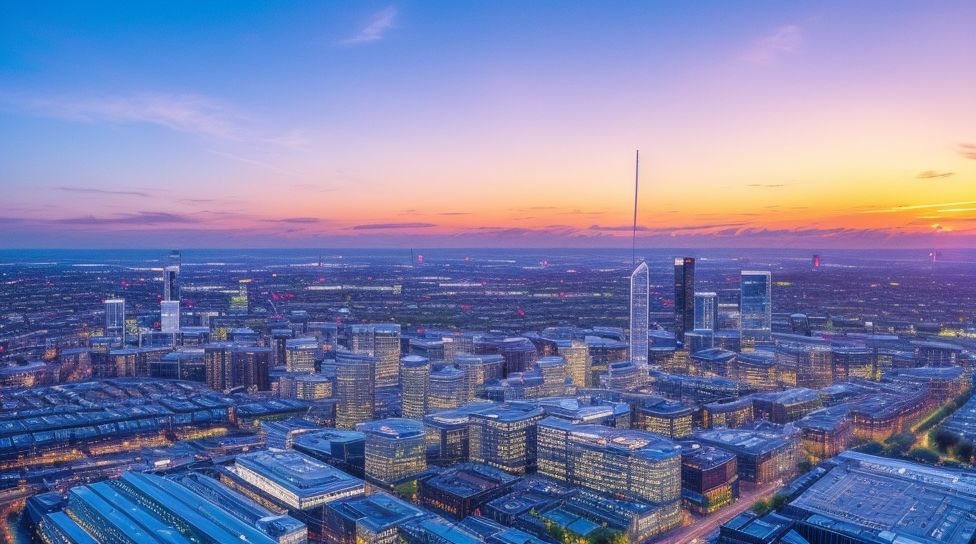
Photo Credits: Runningtrackresurfacing.Uk by Noah Flores
Discover the vibrant tourism and iconic landmarks that await in Greater Manchester County. From the bustling Manchester City Centre to the legendary Old Trafford Stadium, there is something for everyone to explore. Immerse yourself in the creative energy of Media City UK, or marvel at the architectural beauty of Manchester Cathedral. Embark on a journey through the cultural, historical, and architectural wonders that make Greater Manchester County a must-visit destination.
Manchester City Centre
is the vibrant heart of Greater Manchester County. It is known for its rich history, diverse culture, and bustling atmosphere. The city centre is home to numerous attractions, shopping districts, and entertainment venues.
One of the main highlights of Manchester City Centre is its architectural beauty. The city boasts a mix of historic buildings and modern skyscrapers, creating a striking skyline. The iconic Manchester Town Hall, with its Gothic Revival style, is a must-visit landmark. The bustling streets are lined with stunning Victorian and Edwardian buildings, adding to the charm of the area.
The city centre is also a shopper’s paradise. From high-end designer boutiques to popular high street brands, there is something for everyone. The Arndale Centre, one of the largest shopping centres in the UK, offers a wide range of stores and dining options. For those seeking a unique shopping experience, the Northern Quarter is a haven for independent shops, vintage boutiques, and quirky cafes.
Sports enthusiasts will be delighted by Manchester City Centre’s sporting offerings. The Etihad Stadium, home to Manchester City Football Club, is a state-of-the-art facility where visitors can catch exciting matches. The Manchester Arena hosts a variety of sporting events, concerts, and shows throughout the year.
With its lively atmosphere and bustling nightlife, Manchester City Centre is a hub for entertainment. The area is filled with bars, clubs, and live music venues, ensuring there is always something happening for night owls and music lovers.
Manchester City Centre is a vibrant and dynamic part of Greater Manchester County, offering a mix of history, culture, entertainment, shopping, and sports. Whether you’re a history buff, a fashion enthusiast, or looking for a night of fun, Manchester City Centre has something to offer everyone.
Old Trafford Stadium
, located in Greater Manchester County, is a renowned landmark. It serves as the home ground for Manchester United Football Club and has a fascinating history dating back to its establishment in 1909. With a seating capacity of over 74,000 spectators, it stands as one of the largest football stadiums in the United Kingdom.
Throughout the years, Old Trafford Stadium has witnessed numerous historic football matches and has hosted various international tournaments. It has been the venue for UEFA Champions League finals as well as matches for the FIFA World Cup. The electric atmosphere created by passionate fans inside the stadium provides an unforgettable experience for visitors.
The stadium offers a range of facilities for fans, including multiple food and beverage options, merchandise shops, and guided tours. Visitors have the opportunity to explore the stadium’s museum and delve into the club’s illustrious history. Additionally, Old Trafford Stadium occasionally hosts events and concerts, attracting visitors from around the globe.
As an iconic symbol of Manchester’s thriving football culture, Old Trafford Stadium is a must-visit destination for football enthusiasts. Whether you are a fan of Manchester United or simply have an appreciation for the sport, a trip to Old Trafford Stadium promises an incredible experience that will leave you with lasting memories.
Media City UK
is a prominent landmark and hub for the media industry in Greater Manchester County. It has become a hub for various media-related activities and is home to major television and radio broadcasters, production companies, and digital content creators.
Media City UK has significantly contributed to the media landscape in Greater Manchester County, providing opportunities for creative individuals and boosting the local economy. Its presence has made the region a thriving hub for media professionals and enthusiasts, making it an integral part of the county’s cultural and economic fabric.
Manchester Cathedral
Manchester Cathedral is a stunning example of medieval architecture located in the heart of Manchester, UK. The cathedral holds great historical and religious significance for the city.
Built in the 15th century, the cathedral is constructed in the Perpendicular Gothic style. It features a beautiful nave, intricate stained glass windows, and a breathtaking bell tower. The cathedral is known for its impressive vaulted ceiling and its peaceful atmosphere, making it a popular destination for both locals and tourists.
Manchester Cathedral not only serves as a place of worship but also as a cultural hub for the community. It hosts various events, including concerts and art exhibitions, that showcase the talent and creativity of the city.
Visiting Manchester Cathedral allows visitors to delve into the city’s rich history and admire its architectural beauty. It is a place where individuals can connect with their spirituality or simply take a moment of tranquility in the midst of a bustling city.
Whether you are interested in history, architecture, or spirituality, a visit to Manchester Cathedral is a must. It offers a glimpse into the past and provides a space for reflection and contemplation. So, if you find yourself in Manchester, be sure to explore the beauty and serenity of Manchester Cathedral.
Some Facts About Greater Manchester County:
- ✅ Greater Manchester County consists of 10 metropolitan boroughs: Bolton, Bury, Oldham, Rochdale, Stockport, Tameside, Trafford, Wigan, and the cities of Salford and Manchester. (Source: Our Team)
- ✅ It is one of the largest metropolitan areas in the country and covers an area of 493 square miles (1,276 square km). (Source: Our Team)
- ✅ The landscape of Greater Manchester is characterized by the Pennines, which rise to the east and are dissected by deep valleys. (Source: Our Team)
- ✅ The region has a rich history, with origins as a focal point in the Roman road network and later becoming a center for the cotton textile industry. (Source: Our Team)
- ✅ Greater Manchester is well-connected by motorways, including the M6, M60, M56, M61, and M62, and has the largest light rail system in the UK, the Metrolink. (Source: Our Team)
Frequently Asked Questions
What is Greater Manchester County?
Greater Manchester County is a metropolitan county in northwestern England consisting of 10 metropolitan boroughs: Bolton, Bury, Oldham, Rochdale, Stockport, Tameside, Trafford, Wigan, and the cities of Salford and Manchester. It is one of the largest metropolitan areas in the country.
Was Greater Manchester County ever an administrative unit?
Yes, from 1974 to 1986, Greater Manchester County was an administrative unit. However, it lost its administrative powers and became a geographic and ceremonial county without administrative authority.
What is the geography of Greater Manchester County like?
The landscape of Greater Manchester is characterized by the Pennines, which rise to the east and are dissected by deep valleys. There are coalfields flanking the uplands, forming lower plateaus and benches. In the west, there are glacial clay-covered lowlands traversed by the River Mersey.
What is the history of Manchester and Greater Manchester County?
Manchester has a rich history, with its origins as a focal point in the Roman road network. In the 17th century, it became important in the fustian trade with the use of cotton in fabric manufacture. By the late 18th century, it dominated the cotton textile industry with the development of mechanization and the factory system. Other towns in the region, such as Bolton, Bury, Rochdale, and Oldham, also expanded rapidly due to their specialization in cotton spinning. The demand for coal led to extensive mining in the area. The opening of the Manchester Ship Canal in 1894 turned Manchester into a seaport and attracted manufacturing and engineering industries. In the second half of the 20th century, the region became a center for light industries, transportation, warehousing, finance, and administration.
What are some places to visit and things to do in Greater Manchester County?
There are several places to visit and things to do in Greater Manchester County, including The Lowry, Science and Industry Museum, Manchester Art Gallery, Manchester Museum, Haigh Woodland Park, Whitworth Art Gallery, Imperial War Museum North, Dunham Massey, John Rylands Library, and the East Lancashire Railway.
What are some transportation options in Greater Manchester County?
Greater Manchester County is well-connected by motorways, with the M6 Motorway connecting Scotland to the Midlands and passing through Greater Manchester. The M60 Motorway (Manchester Outer Ring Road) also passes through most of the metropolitan boroughs, along with other motorways such as the M56, M61, and M62. The Metrolink is the largest light rail system in the UK and serves destinations such as Manchester, Salford, Manchester Airport, Bury, Oldham, Rochdale, Didsbury, and Ashton-under-Lyne. Manchester Piccadilly is the busiest railway station in the county, offering services to various locations including Blackpool North, Newcastle, Crewe, Liverpool Lime Street, Alderley Edge, Norwich, Llandudno Junction, Stoke-on-Trent.
